 Origins
Origins
1845-1908
Queen's University of IrelandIn 1845 the Queen's College Act established three new colleges “for the Advancement of Learning in Ireland”: Queen's College Cork, Queen's College Galway and Queen's College Belfast. These Colleges were opened for teaching in 1849, and in 1850 were linked together under the umbrella of the Queen's University of Ireland, established by Royal Charter.
Catholic University of IrelandA Papal rescript issued in 1847 condemned the Queen's Colleges as "detrimental to religion", and proposed to the Irish bishops the foundation of a Catholic University, modelled on Louvain. A decree of the Synod of Thurles in 1850 accepted the proposal. On 12 November 1851, John Henry Newman was appointed first Rector of the Catholic University, an institution founded and funded independently of the State. The Catholic University was formally opened in November 1854.
The Royal UniversityThe University Education (Ireland) Act, 1879 provided for the formation of a new University in Ireland, afterwards styled the Royal University of Ireland, whose examinations were open to all candidates, whether they had attended College lectures or not. The Charter of the Royal University was granted on 27 April 1880 and the Queen's University was dissolved on the 3 February 1882.
The foundation of the Royal University provided an opportunity to improve the position of the Catholic University students, to whom recognised University degrees had not hitherto been available. St Patrick's House (now Newman House, St Stephen's Green) changed its title to University College, Dublin, and took over, under the control of the Jesuit Fathers, all the work of the Catholic University, except the teaching of medicine, which continued in Cecilia Street, under the title of the Catholic University Medical School.
The Queen's Colleges in Cork, Galway and Belfast continued to exist as constituted by the Act of 1845, but had no special status in relation to the Royal University, nor any effective share in framing its policy or drawing up its courses.
1908 -1997
The Irish Universities Act, 1908 established two new Universities - the National University of Ireland and the Queen's University of Belfast and dissolved the Royal University on 31 October 1909. Under this Act, the National University became a federal University with its seat in Dublin and with three Constituent Colleges established by Charter: University College, Dublin; University College, Cork; and University College, Galway. The Queen's Colleges in Cork and Galway were given an entirely new status and title. The Jesuit University College, Dublin, was given a new constitution and was merged with the Catholic University Medical School. The Act empowered the University Senate to recognise courses of study in other institutions for the purpose of degrees, and the following institutions were granted the status of Recognised College.
Recognised Colleges of the National University:- 1910 to 1997: St Patrick's College, Maynooth
- 1975 to 1995: St Patrick's College of Education, Drumcondra, Dublin
- 1975 to 1988: Our Lady of Mercy College, (Carysfort) Dublin
- 1975 to 1994: Mary Immaculate College, Limerick
- 1976 to 1977: The National Institute for Higher Education, Limerick
- 1976 to 1977: Thomond College of Education, Limerick
- 1977: Royal College of Surgeons in Ireland
- 1978 to 2005: St Angela's College of Education, Sligo
- 1996: National College of Art and Design, Dublin
- 2002: Shannon College of Hotel Management
- 2002: Institute of Public Administration
- 2005: Milltown Institute
- 2013: Uversity
The Universities Act, 1997, which came into effect on 16 June, 1997, redefined the nature and role of the National University of Ireland. It reconstituted the Senate, which is the Governing Body of the University, with a membership of thirty-eight, as follows:
- The Chancellor
- The Chief Officers of the Constituent Universities
- The Registrar of the University
- Four members nominated by the Government (two men and two women)
- Four persons elected by each of the Constituent Universities
- Eight members elected by Convocation (four men and four women)
- Four co-opted members
Under the Act, the Senate of the National University of Ireland has functions and responsibilities in relation to the following:
- determining basic matriculation requirements;
- reviewing the content and teaching of courses;
- appointing external examiners;
- awarding degrees and other qualifications.
The 1997 Act also reconstituted the three Constituent Colleges of the National University of Ireland, and the Recognised College, St Patrick's College, Maynooth as Constituent Universities.
The Qualifications and Quality Assurance (Education and Training) Act 2012, which came into effect in November 2012, defined the University as a “designated awarding body”. As such, the Act requires the University to establish quality assurance arrangements in respect of “linked providers” that deliver educational programmes leading to awards of the University. The Act also provides for periodic review of the University’s quality assurance procedures by Quality and Qualifications Ireland, the Authority established under the Act to oversee quality assurance of further and higher education and training in Ireland.
49 Merrion Square, Dublin 2
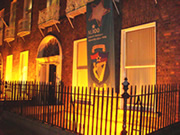 This house dates from the 1790’s. It was leased by Robert Way Harty of Prospect Hall in 1818, who became Lord Mayor of Dublin in 1831. Number 49, on the east side of one of Dublin’s best-known Georgian squares, has been home to the Central Office of the National University of Ireland since 1912. The premises feature in Dublin City Council’s Record of Protected Structures which lists protected structures of architectural, historical, archaeological, artistic, cultural, social, scientific or technical importance.
This house dates from the 1790’s. It was leased by Robert Way Harty of Prospect Hall in 1818, who became Lord Mayor of Dublin in 1831. Number 49, on the east side of one of Dublin’s best-known Georgian squares, has been home to the Central Office of the National University of Ireland since 1912. The premises feature in Dublin City Council’s Record of Protected Structures which lists protected structures of architectural, historical, archaeological, artistic, cultural, social, scientific or technical importance.
The original Senate Rooms on the first floor of Number
49 contain a cycle of early nineteenth-century mural paintings. The
cycle consists of a series of Italianate landscape paintings, which completely
cover the walls from the dado upwards.
A painted frame of illusionistic woodwork in red surrounds each mural separately. ‘[Robert Way Harty] commissioned a series of mural paintings for No. 49 Merrion Square, which represent Italian scenes taken from engravings of paintings by Claude Lorraine, Salvatore Rosa, Rubens and others. These murals combine to create a romantic interior of nobility and style for the t shaped room….* In the absence of documentary evidence, the attribution of the paintings cannot be established. However, they are of very high quality and rank with any cycle in these islands. As illusionistically framed landscapes they are unique in Georgian Dublin, and are also protected by a preservation order.
On 6th November 2001, Dr Garret FitzGerald, then Chancellor of the University, formally opened a new extension to Number 49 Merrion Square. In his remarks, Dr FitzGerald noted that ‘’… architecturally, the new building [the Phelan Building] is very much in sympathy with its surroundings. The Georgian idiom has been interpreted with great sensitivity by our architect, the colour of the brick - frequently a jarring note in recreated Georgian - is rich and modulated, the detail of door and window is authentic and overall the effect is harmonious and complementary.’
The construction of the new extension was undertaken in consultation with Dublin Corporation and its completion marks the first major physical change in the NUI Central Office since the University took up residence in 1912. The purpose-built facility, designed to accommodate small conference arrangements, incorporates a new room for Senate Meetings, two other meeting rooms, and ancillary facilities.
The new Senate Room - to be known as ‘The Phelan Room’, was partly funded by a bequest from the estate of Edward J.  Phelan, former Director of the International Labour Organisation, and a distinguished Honorary Graduate of the University, and his wife Fernande. Dr FitzGerald expressed the hope that, aside from meetings of Senate ‘the new extension will provide a focus for a broad spectrum of activities involving interaction and collaboration of colleagues from the Constituent Universities and Recognised Colleges of NUI. Given its wonderful location, here in the heart of Georgian Dublin, we believe that this will prove to be an attractive and useful venue for various events and functions’.
Phelan, former Director of the International Labour Organisation, and a distinguished Honorary Graduate of the University, and his wife Fernande. Dr FitzGerald expressed the hope that, aside from meetings of Senate ‘the new extension will provide a focus for a broad spectrum of activities involving interaction and collaboration of colleagues from the Constituent Universities and Recognised Colleges of NUI. Given its wonderful location, here in the heart of Georgian Dublin, we believe that this will prove to be an attractive and useful venue for various events and functions’.
*‘Dublin - A Grand Tour’: J. O’Brien and D. Guinness; G Weidenfeld and Nicholson Ltd. London, 1994.
 Constituent Universities
Constituent Universities
University College Dublin - National University of Ireland, Dublin
The Catholic University of Ireland was founded in 1851 by the Irish Hierarchy with John Henry Newman who was installed in 1854 as its first rector. Lectures commenced on 3 November, 1854 in the Faculties of Theology, Philosophy and Letters on premises at St Stephen's Green. One year later in Cecilia Street, lectures began in the Faculty of Medicine.
The foundation of the Royal University gave an opportunity to improve the position of the Catholic University students, to whom recognised University Degrees had not previously been available. The University Education (Ireland) Act, 1879, established the Royal University of Ireland as an examining body. The Medical School in Cecilia Street continued as the Catholic University Medical School, while the other Faculties, based in St Patrick's House (now Newman House), St. Stephen's Green, became University College, Dublin, under the direction of the Jesuits.
The Irish Universities Act (1908) established the National University of Ireland, with University College Dublin as a Constituent College to which a Charter was granted on 2 December, 1908. The Catholic University Medical School became part of University College Dublin. The Earlsfort Terrace premises used by the Royal University were transferred to University College, Dublin, which also obtained the use of the Royal College of Science in Upper Merrion Street in 1926.
In 1934, Belfield House and grounds were purchased to provide a sports centre and playing fields and, in the period since 1949, the College has acquired several other adjoining properties. Following a Government Commission on the Accommodation Needs of the Constituent Colleges of the National University of Ireland, Dáil Éireann approved the recommendation that University College Dublin should be transferred to the Belfield site.
Under the Universities Act, 1997, University College, Dublin was reconstituted as National University of Ireland, Dublin (Ollscoil na hÉireann, Baile Átha Cliath). In November 1998, this name was changed by Ministerial Order to University College Dublin - National University of Ireland, Dublin (Coláiste na hOllscoile, Baile Átha Cliath - Ollscoil na hÉireann, Baile Átha Cliath).
University College Cork - National University of Ireland, Cork
Under the provisions of the ‘Act 8 and 9 Victoria, cap. 66’, 1845, (An Act to enable Her Majesty to endow new Colleges for the Advancement of Learning in Ireland), the three Colleges of Belfast, Cork and Galway were incorporated on the 30 December 1845. Statutes and a system of education to be pursued in the Colleges were devised by the ‘Board of Queen’s Colleges’. Queen’s College Cork, Queen’s College Galway and Queen’s College Belfast were opened to students on 30 October, 1849.
The Queen’s University in Ireland was founded in 1850, and its Charter provided that the Senate should have power to confer upon the students of the Queen’s Colleges of Belfast, Cork and Galway such degrees and distinctions in the faculties of Arts, Law and Physics as are granted in other colleges and universities of Great Britain and Ireland.
In 1879 the University Education (Ireland) Act provided for the formation of a new University in Ireland. The Charter for the new University, styled the Royal University, was granted on 27 April 1882, and the Queen’s University was dissolved on 3 February 1882.
Under the provisions of the Irish Universities Act, 1908, two new Universities were established - the National University of Ireland and the Queen’s University, Belfast; Queen's Colleges, Cork became University College Cork, a Constituent College of the National University of Ireland. A new Charter for the College was issued on the 2 December, 1908. The Royal University was dissolved on 31 October 1909.
Under the Universities Act 1997 University College Cork was reconstituted as National University of Ireland, Cork (Ollscoil na hÉireann, Corcaigh). In November 1998, this name was changed by Ministerial Order to University College Cork - National University of Ireland, Cork, (Coláiste na hOllscoile, Corcaigh - Ollscoil na hÉireann, Corcaigh).
National University of Ireland, Galway
The University was founded in 1845 as Queens College Galway. It was one of the three Queen’s Colleges founded under the provisions of the Act 8 and 9 Victoria, cap. 66, entitled "An Act to enable her Majesty to endow new Colleges for the Advancement of Learning in Ireland" (short title The Queen’s Colleges (Ireland) Act, 1845), the others being located in Belfast and Cork. On 30 December 1845, Letters Patent were issued incorporating it under the name and style of "The President, Vice-President and Professors of Queens College Galway."
The College was opened for students on 30 October 1849. The Presidents and Vice-presidents of the three Queen’s Colleges constituted a Board of Government until the foundation of the Queen’s University in 1850. Through the University Education (Ireland) Act, 1879, provision was made for the foundation of the Royal University and the dissolution of the Queen’s University within two years from the date of the Charter of the Royal University. All graduates and matriculated students of the Queen’s University at the time of dissolution became graduates and students of the Royal University, and all existing Professors of the Queen’s Colleges continued to be University Professors. The Charter of the Royal University was granted on 27 April 1880, and the Queen’s University was dissolved on 3 February 1882.
The Royal University was dissolved (in 1909) by the Irish Universities Act, 1908 and two new Universities were created: the Queen’s University of Belfast (formerly Queen’s College, Belfast) and the National University of Ireland. The latter was to be a federal University with its seat in Dublin and with three Constituent Colleges (University College Dublin, University College Cork, and University College Galway). A new Charter for the College was issued on 20 December 1908, changing the name of the College to University College, Galway. In 1929, the University College Galway Act, 1929/Acht Choláiste Phríomh-Scoile na Gaillimhe, 1929 was enacted by Oireachtas Éireann.
Under the Universities Act/Acht na nOllscoileanna, 1997 (which came into operation on 16 June, 1997), University College Galway was reconstituted as a University, under the name of Ollscoil na hÉireann, Gaillimh/National University of Ireland, Galway, and became a Constituent University of the National University of Ireland.
Ollscoil na hÉireann, Gaillimh
Sa bhliain 1845 a bunaíodh an Ollscoil, nó Queen’s College Galway mar a tugadh uirthi ag an am. Ceann de thrí Choláiste na Ríona a bhí inti a bunaíodh faoi fhorálacha Act 8 and 9 Victoria, cap. 66, dar teideal "An Act to enable her Majesty to endow new Colleges for the Advancement of Learning in Ireland" (gearrtheideal: The Queen’s Colleges (Ireland) Act, 1845). I mBéal Feirste agus i gCorcaigh a bhí an dá Choláiste eile. Ar 30 Nollaig, 1845, eisíodh Litreacha Paitinne á corprú faoin teideal "The President, Vice-President and Professors of Queens College Galway."
Thosaigh na céad Mic Léinn ar an gColáiste ar 30 Deireadh Fómhair, 1849. Uachtaráin agus Leas-Uachtaráin trí Choláiste na Ríona a bhí ina mBord Gobharnóirí go dtí an bhliain 1850, tráth ar bunaíodh Ollscoil na Ríona. Socraíodh, faoin University Education (Ireland) Act, 1879, go mbunófaí an Ollscoil Ríoga agus go scoirfí Ollscoil na Ríona dhá bhliain ó dháta Chairt na hOllscoile Ríoga. Rinneadh Céimithe agus Mic Léinn de chuid na hOllscoile Ríoga de Chéimithe agus de Mhic Léinn Mháithreánaithe Choláiste na Ríona, agus iadsan a bhí ina nOllúna i gColáistí na Ríona ag an am fágadh ina nOllúna Ollscoile iad. Eisíodh Cairt na hOllscoile Ríoga ar 27 Aibreán, 1880 agus scoireadh Ollscoil na Ríona ar 3 Feabhra, 1882.
Scoireadh an Ollscoil Ríoga sa bhliain 1909 faoin Irish Universities Act, 1908 agus bunaíodh dhá Ollscoil nua: Ollscoil na Ríona, Béal Feirste (Coláiste na Ríona, Béal Feirste mar a bhí roimhe sin) agus Ollscoil na hÉireann, Ollscoil chónascach lonnaithe i mBaile Átha Cliath le trí Chomhcholáiste (An Coláiste Ollscoile, Baile Átha Cliath, Coláiste na hOllscoile, Corcaigh, agus Coláiste na hOllscoile, Gaillimh). Eisíodh Cairt nua don Choláiste ar 20 Nollaig, 1908 a d’athraigh ainm an Choláiste go Coláiste na hOllscoile, Gaillimh. Sa bhliain 1929, d’achtaigh Oireachtas Éireann Acht Choláiste Phríomh-Scoile na Gaillimhe, 1929.
Faoi fhorálacha Acht na nOllscoileanna, 1997 (a tháinig i bhfeidhm ar 16 Meitheamh, 1997), athbhunaíodh Coláiste na hOllscoile, Gaillimh mar Ollscoil, faoin teideal Ollscoil na hÉireann, Gaillimh/National University of Ireland, Galway agus rinneadh Comhollscoil d’Ollscoil na hÉireann di.
Maynooth University - National University of Ireland, Maynooth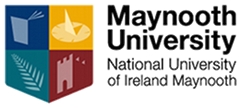
In 1795, Grattan's Parliament passed an Act creating an academy "for the better education of persons professing the popish or Roman Catholic religion". The new academy, St. Patrick’s College, was founded in Maynooth. In 1910, St Patrick's College, through its faculties of Arts, Science, Philosophy and Celtic Studies, became a Recognised College of the National University of Ireland. In 1966, the College opened its doors to lay students and its population grew over the next three decades.
Under the Universities Act 1997, the Faculties comprising the Recognised College were designated as the National University of Ireland, Maynooth, a Constituent University of the National University of Ireland.
St Patrick's College continues to exist as a separate legal entity and comprises the National Seminary and a Pontifical University with faculties of Canon Law, Philosophy and Theology. National University of Ireland, Maynooth occupies a separate campus to the north of the Kilcock-Maynooth road and it continues to share space on the original St Patrick's campus.
 Recognised Colleges
Recognised Colleges
Royal College of Surgeons in Ireland
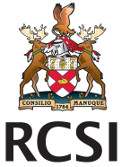
The Royal College of Surgeons in Ireland (RCSI) was founded in 1784 by Royal Charter from King George III, to educate surgeons who at that time were trained separately from physicians. After 1886, the training of physicians and surgeons merged, and the College began to train doctors in its Medical School. In recent times the College has developed into a major international Medical School. Primary Degree courses are provided in Medicine, Nursing, Physiotherapy and Pharmacy and postgraduate studies are available in a range of medical subjects including Anaesthesia, Radiology and Dentistry.
In 1977 the Medical School of the Royal College of Surgeons in Ireland became a Recognised College of the National University of Ireland. In 2003, the Oireachtas passed a Private Act, the RCSI (Charters Amendment) Act, 2003, amending the RCSI charters to enable the College to award degrees. These powers were commenced in 2010 following an institutional review of the College.
The Qualifications and Quality Assurance (Education and Training) Act 2012 amended the Universities Act 1997 so as to recognise RCSI degrees as degrees of the NUI, where they are approved by the NUI and while the College remains a Recognised College of the NUI.
Institute of Public Administration

The genesis of the Institute of Public Administration arose from the deliberations of a group of senior public servants who saw the need for a modern professional education for members of the Irish public sector and for the informed analysis and evaluation of Irish public policy-making. Arising from these deliberations, a formal organisation, the Institute of Public Administration (IPA), was founded in 1957. It became a company limited by guarantee in 1963 and is a non-profit-making voluntary body. The IPA is the only organisation in Ireland offering a comprehensive range of services in public administration – in research, education, training and publications.
From the outset, the IPA was anxious to pursue best practice. Senior staff visited the École Nationale D’Administration in Paris to study its methods and the reasons for its far-reaching influence on the higher echelons of the French civil service and throughout French public life. In order to create a similar influence on the Irish public sector, a School of Public Administration was established within the IPA, and this later evolved into its Education Division.
External accreditation for the IPA’s undergraduate degree programmes was first granted in 1982 and for its programmes at postgraduate level in 1994. The IPA became a Recognised College of the National University of Ireland in 2001. It offers a range of part-time undergraduate and postgraduate programmes, focusing on the disciplines germane to the understanding and practice of public sector management. A particular feature of the IPA’s education provision is the availability of all of its education programmes through distance education. This reflects the fact that the IPA was a pioneer of distance education in Ireland in order to serve the needs of a geographically dispersed public service. The IPA became a linked college of University College Dublin in 2011, subsequently returning as a Recognised College of NUI from 1st September 2018.
Uversity
 Uversity was established in 2012 by twenty-four Irish and Northern Irish higher education institutions with a view to promoting Ireland as a centre for creative arts education. It offered an innovative MA in Creative Process, a programme that drew from modules offered by all of the partner institutions.
Uversity was established in 2012 by twenty-four Irish and Northern Irish higher education institutions with a view to promoting Ireland as a centre for creative arts education. It offered an innovative MA in Creative Process, a programme that drew from modules offered by all of the partner institutions.
Uversity became a Recognised College of the NUI in June 2013. NUI provided accreditation for the MA in Creative Process and between 2013 – 2017, three cohorts of students were conferred with their MA degrees by NUI Chancellor, Dr Maurice Manning.
The MA programme has since been discontinued and Uversity’s strategic direction has moved to support adult learners to enrol on a Bachelor’s Degree for the first time in Irish higher education institutions on the island of Ireland. The alumni of Uversity’s MA in Creative Process are alumni of the National University of Ireland and have access to relevant supports and documentation from NUI. More information is available here.
 College of a Constituent University
College of a Constituent University
St. Angela's College, Sligo (A College of NUI, Galway)
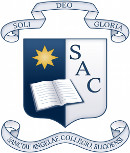
St. Angela's College of Education, Sligo, was granted the status of Recognised College of the NUI in 1978, and retained that status until the end of 2005. In a historic Agreement between the College and NUI, Galway, the re-styled 'St. Angela's College, Sligo' became a College of NUI, Galway as of 1 January 2006.
Founded as a training college for teachers of Home Economics, St. Angela's has expanded its education services far beyond its original remit. Today it provides a range of full-time and part-time academic programmes at masters, degree, diploma and certificate level.
Full-time programmes include a BEd in Home Economics with Biology or Religious Education, BA in Economic and Social Studies and Diploma/Degree in Nursing (General) and Nursing (Mental Handicap). Part-time programmes include a Masters in Education, Bachelor of Nursing, BA Psychological Studies/Sociological and Political Studies, and a number of diploma and certificate courses.
The College has links to industry through involvement in the Graduate Enterprise Programme and the activities of its Food Centre established to meet the needs of the food industry in the northwest. The College has a long history of involvement in Cross Border projects, as well as European and international links through the EU Socrates programme and membership of the world-wide International Federation for Home Economics.
National College of Art and Design

The National College of Art and Design, Dublin was founded in 1746 as ‘a little academy for drawing and painting’ which was supported by the Royal Dublin Society. In 1924 the College came under the control of the Department of Education. From 1936 it was styled ‘The National College of Art’, issuing its own Diplomas; in 1971 the College was reconstituted by Act of the Oireachtas, when many of its functions were placed under a board appointed by the Minister for Education.
In July 1996, the year when the college celebrated its two hundred and fiftieth anniversary, the Senate of the National University of Ireland granted Recognised College status to the National College of Art and Design. The College provides degree and postgraduate programmes in Art and Design Education, Fine Art and a range of Design disciplines. The first intake of students registering for courses of study leading to the award of degrees of the National University of Ireland took place in September 1999.
The College moved to premises in Thomas Street, Dublin in 1980. In July 1998, a new School of Design and Industry was opened on the Thomas Street campus, which brought all the College activities to one location.
Shannon College of Hotel Management
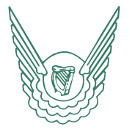
The Shannon College of Hotel Management was founded in 1951 by Dr. Brendan O’Regan to train managers for the Irish hotel industry. Since then it has become Ireland’s leading Hotel College and has established an international reputation for excellence. The reputation of the College has grown from strength to strength and spread throughout the world.
Shannon’s educational system is unique. The College believes that industry experience at operational, supervisory and trainee management level is a central part of management training. Equally important are the development of product knowledge, business skills and foreign language fluency. These four elements are carefully moulded together at Shannon to form the Shannon Diploma course in International Hotel Management.
The Senate granted Recognised College Status to Shannon College of Hotel Management in November 2000.
Burren College of Art - Coláiste Ealáine na Bóine
 Burren College of Art is a small, independent art school situated on the Wild Atlantic Way on the northwest coast of County Clare in Ireland. It is located in the Burren, a region famous for its natural beauty and unique ecosystem. We are an internationally recognized Irish non-profit college specializing in undergraduate, postgraduate and alternative approaches to fine art education. Our Master of Fine Art programme is accredited by the National University of Ireland, Galway.
Burren College of Art is a small, independent art school situated on the Wild Atlantic Way on the northwest coast of County Clare in Ireland. It is located in the Burren, a region famous for its natural beauty and unique ecosystem. We are an internationally recognized Irish non-profit college specializing in undergraduate, postgraduate and alternative approaches to fine art education. Our Master of Fine Art programme is accredited by the National University of Ireland, Galway.
























